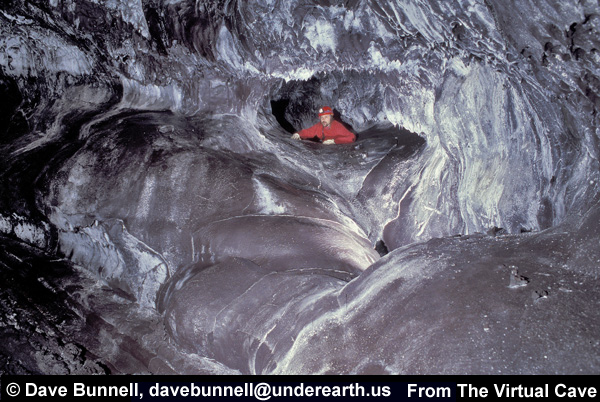

| Many lava tube passages
have a smooth, thin, metallic-looking coating over the darker, coarser
basalt underneath. Glaze frequently covers all the surfaces in a passage.
The formation of glaze is a matter of dispute. Some feel that it represents
remelting of the basalt from hot flows and gases in the tube. The Allreds
(1998) suggest that glaze is "the continuous to discontinuous coating
of magnetite crystals growing on either segregated or parent lava. Glaze
grows after the segregated lava seeps or bubbles out". They found that
the silvery luster of glaze is due to tiny facets of magnetite on the
surface. Glaze can become red when oxidized, as near a skylight,
or greenish when high in pyroxene. Glaze is also used somewhat more generically to describe any lining with a smooth surface. |

| Back to: | |
 |
Created: August 4, 2000
Author: Dave Bunnell |